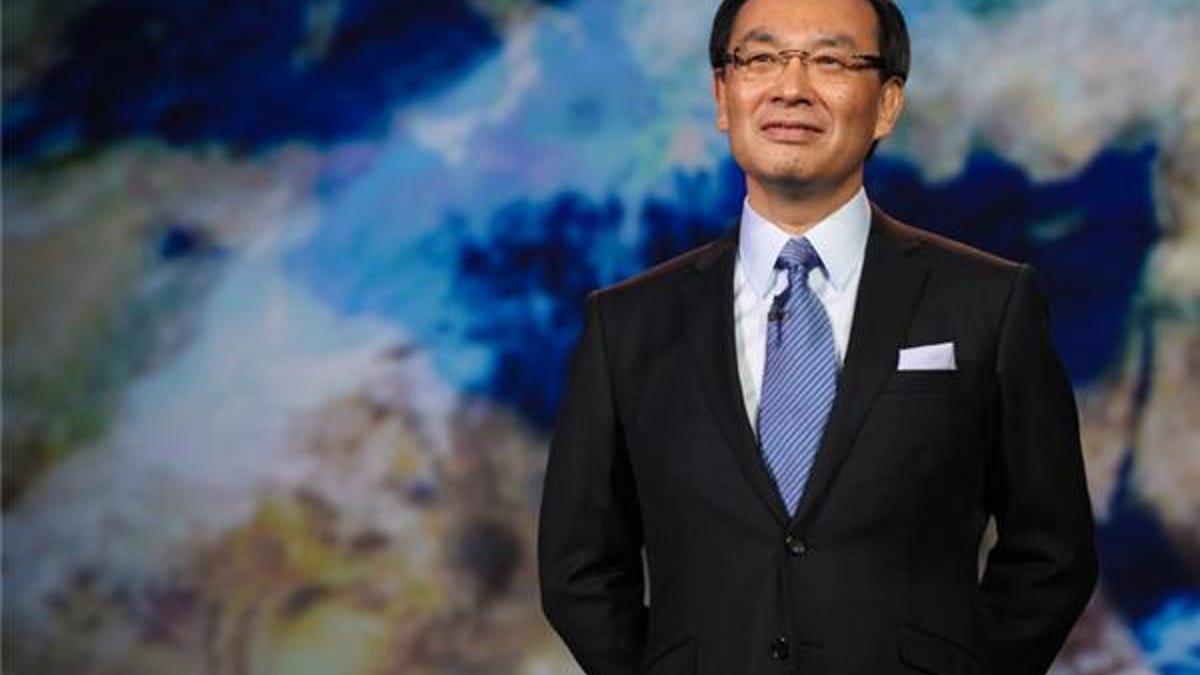Panasonic highlights its ambitions beyond TVs at CES 2013
Panasonic President Kazuhiro Tsuga talked up the company's extensive business at this year's CES. And he showed the future of TVs and touted tablets with 4K resolution screens.

Panasonic is more than a TV company. Or so said the company's president, Kazuhiro Tsuga, during an opening keynote address at the Consumer Electronics Show in Las Vegas on Tuesday.
Indeed, Tsuga and TV journalist Lisa Ling, who joined him on stage, spent the good part of an hour highlighting the many facets of Panasonics varied business. From green technology and battery technology that helps power smart grids and electric cars to cutting edge avionics technology to creating new cutting edge business-class tablets. And of course, there was talk of the successful TV business.
At the heart of the discussion was Panasonic's commitment to delivering new and innovative technologies to its customers.
"Now more than ever, we are committed to creating real value for our customers," Tsuga said. "Our ability to do this is based on two fundamental things: Listening to what our customers need.... In fact, there are Panasonic research centers created just to do that. Second, we are creating lasting relationships with customers that continue long after they have purchased their product."
As part of the presentation, Tsuga showed off some exciting new products, like the new 4K 56-inch OLED TV and the 20-inch Windows 8 tablet with a 4K screen. And he announced a new partnership with Specific Media, an interactive-media company that helps integrate advertising into video and mobile platforms. And lastly, he announced that the company is moving its North American headquarters to Newark, N.J., in what it hopes is a partnership that will help revitalize the city.
When it comes to the TV market, Tsuga said people are hungry for change. And he said Panasonic is determined to raise the bar in terms of their expectations. In addition to bigger and clearer screens, he said consumers also want to access more content and interact with their friends.
He was joined on stage by Tim Vanderhook, co-founder and president of Specific Media, who talked about the partnership with Panasonic and how the two companies will help enable the next generation of the TV experience. The idea is to give consumers a deeper level of engagement with content. They showed an on-screen TV guide that depicted what a TV owner was watching, as well as showing what the owner's friends were watching. And it also allowed for chat sessions between friends as they watched the program.
But at the heart of the company's TV strategy is making the picture amazing. And that's exactly what Panasonic showed off with a new prototype TV. The Panasonic 4K OLED is a 56-inch TV that features 3,840x2,160-pixel resolution, weighs 27 pounds and is less than half an inch thick. The bezel also appears very slim and equivalent to a mainstream LCD.
In addition to the super resolution 4K TV, Panasonic also talked up a new 20-inch Windows 8 4K tablet. The tablet comes with a stylus and is designed for people who need high-end resolution.
Neither product is commercially available, but the company will be showing them off this week at its booth at CES. For a full rundown of Panasonic's product announcements check out the post from yesterday's press conference.
Panasonic's CES press confab: Not much on plasmas, but a hair dryer or two (pictures)
See all photosMoving on from TVs and tablets, Panansonic executives discussed the company's other areas of technological innovation, such as green technology. Tsuga talked about how Panasonic is working with companies such as IBM to come up with more-efficient energy solutions. And he highlighted Panansonic's solar panel and lithium battery businesses. Journalist Ling said she was a customer of Panasonic's while she and her husband built their environmentally sustainable home in California.
Tsuga said Panasonic has taken many of the technologies it's developed for green homes adapted them for the automotive industry. Panasonic's global automotive partners include Volskwagen, Audi, Daimler-Chrysler, Ford, General Motors, Tesla Toyota, Nissan, Honda, and Mazda. Specifically, Panasonic batteries are being used to power Tesla's electric cars. And GM is using some of its technology to power apps in its cars.
Panasonic doesn't offer technology to just the automotive industry, it also offers tech to 275 airline partners. United Airlines has implemented Panasonic in-flight systems. And Panasonic welcomed the CEO of Air New Zealand to talk about a partnership between the two companies. Tsuga said that in 2014, Panasonic is planning to launch its lowest-cost and lightest in-flight tech suite ever.
And finally, Tsuga highlighted Panasonic's commitment to improving communities with its technology and its business. He invited Newark Mayor Cory Booker on stage to announce a partnership between the city and the consumer-electronics giant. Not only is Panasonic moving its North American headquarters to Newark but the company will also be working with the city to showcase advances in technology and green products. And it has a plan to reduce the city's energy use by 50 percent.

